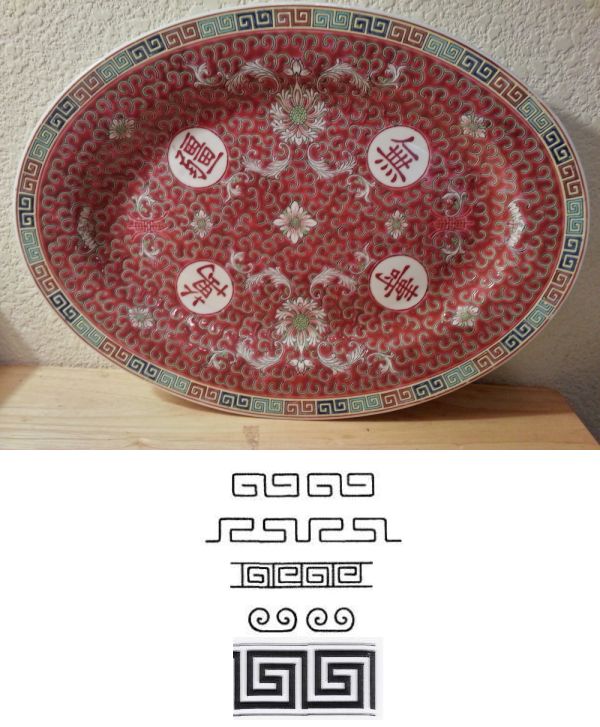Ornaments (from the Latin ornamentum - adornment) is one of the first forms of art invented. It is based on repeatedly using an identical motif in an orderly way. A frieze is the same ornamental element repeated over and over again.
A very basic border, pattern or frieze is created at any attempts to veawe with any type of fibres, that gives a regular pattern. Since all such early products from the beginning of human civilizations has perished, it is likely that textiles and basket weawing actually got a much larger importance in the history of decorative art then we think of today.
There are several different kinds of ornaments.
 One of the most common geometrical on Chinese ceramics and also silk textiles and rugs is the meander. It is named after Maiandros, a meandering river in Asia Minor whose course was seen as a geometrical pattern that was constructed with rules and contractors.
One of the most common geometrical on Chinese ceramics and also silk textiles and rugs is the meander. It is named after Maiandros, a meandering river in Asia Minor whose course was seen as a geometrical pattern that was constructed with rules and contractors.
Beside geometrical ornaments there are also plant ornaments, animal ornaments and ornaments consisting of human shapes.
A series results from adding the same shape of the same size several times over. Their positions and the distances between them remain the same.
In a rhythmic series shape, size, position and gaps of the individual element can change. Such a series looks variable and lively. A typical example of a rhythmic series of human and animal shapes is the hunting sceenes seen on som Han dynasty jars.
A